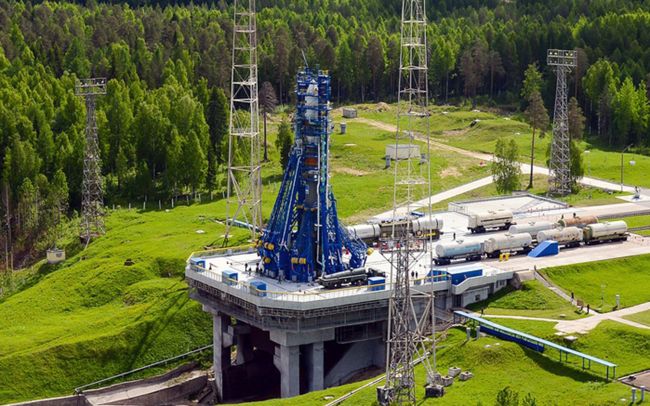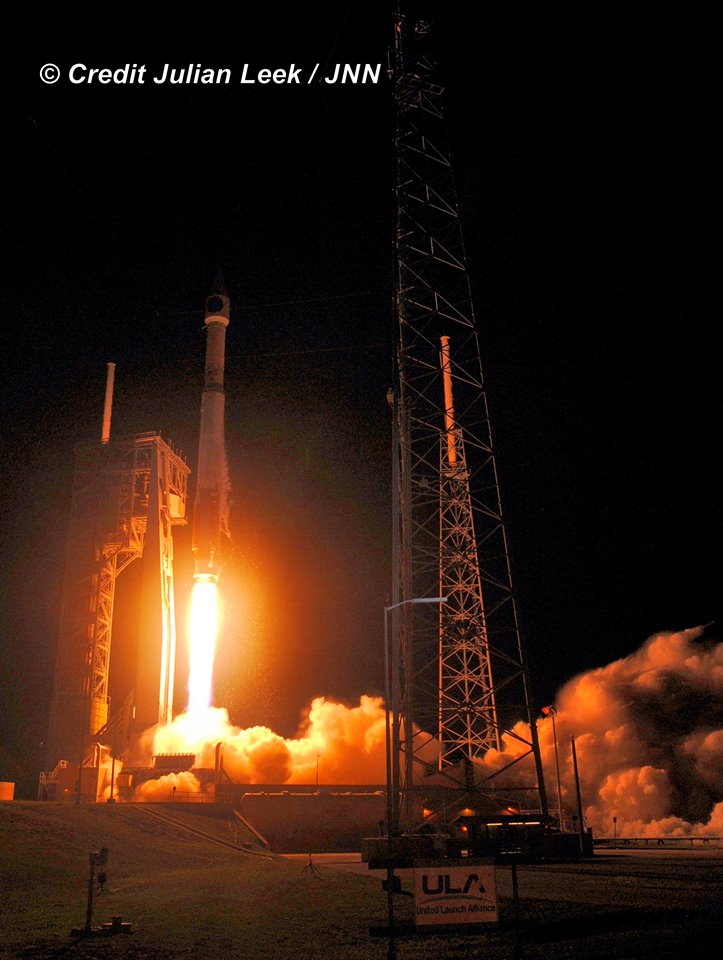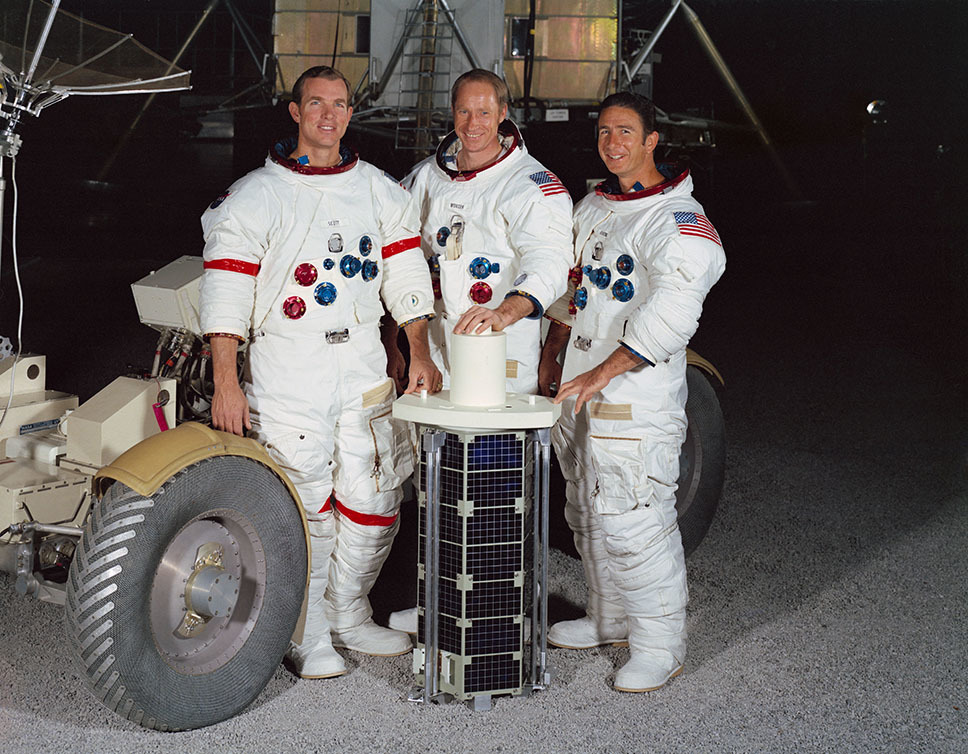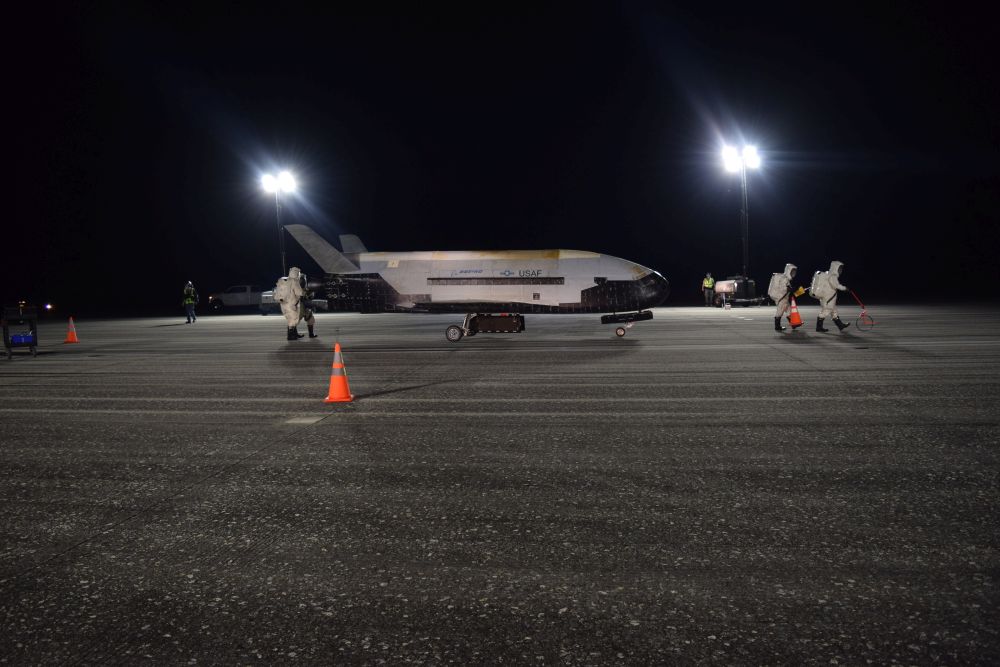The United States and Russia/USSR have been adversaries for a long time. Their heated rivarly stretches back to the waning days of WW2, when the enormous Red Army was occupying large swathes of eastern Europe, and the allies recognized the inherent threat.
The Cold War followed, when the two nations aimed an absurd number of nuclear warheads at each other. Then came the Space Race, when both nations vied for the prestige of making it to the Moon.
The US won that race, but the rivalry didn’t cool down.
They’re rivals to this day, though Russia’s space activities have fallen behind those of the USA. They’ve suffered prominent setbacks in space, like when the Phobos-Grunt sample collection mission to the Martian moon Phobos failed. And their scientific prestige has suffered other blows, too, like the catastrophic accident at the Chernobyl Nuclear plant in the Ukraine.
Another chapter in this long rivarly opened recently, when the USA accused Russia of testing an anti-satellite weapon in space.
A statement from the US Space Command said that “Russia conducted a non-destructive test of a space-based anti-satellite weapon,” on July 15th.
“The Russian satellite system used to conduct this on-orbit weapons test is the same satellite system that we raised concerns about earlier this year, when Russia maneuvered near a U.S. government satellite.”
General John Raymond, Commander, US Space Force, US Space command
It started with the Russian satellite Kosmos 2543, which was launched in November 2019 from Plesetsk. At that time, its cargo was classified. The Russian military, however, stated that the satellite was based on a standard platform designed to inspect other Russian satellites.

Fast forward to July 15th, when Kosmos 2543 released another unkown object—which the Americans are calling a “projectile”—near another Russian satellite. At that time, the Russian Defense Ministry said that Kosmos 2543 would come close to another object for inspection purposes. This made sense, since Russian satellites have a history of close inspections over the last decade or so.
But there’s more to this.
When Kosmos 2543 was launched, it was launched along with another Russian satellite, Kosmos 2542. In January, satellite trackers said that both satellites looked like they were “stalking” a US spy satellite named USA 245. In the MIT Technology Review, Thomas Roberts, a former security fellow at the Center for Strategic and International Studies (CSIS) said “Things do move around in low Earth orbit, but to expend your valuable propellant in this way to perfectly position yourself to view another satellite like this to me is just beyond the pale.” He added that “It’s not a coincidence.”

The Americans were not pleased. Gen. John “Jay” Raymond, commander of US Space Command and chief of space operations for the US Space Force, told Time in February that “We view this behavior as unusual and disturbing. It has the potential to create a dangerous situation in space.”
Now that Kosmos 2543 has released this projectile, it’s setting off some alarm bells.
In a statement, Gen. Raymond said “The Russian satellite system used to conduct this on-orbit weapons test is the same satellite system that we raised concerns about earlier this year, when Russia maneuvered near a U.S. government satellite. This is further evidence of Russia’s continuing efforts to develop and test space-based systems, and consistent with the Kremlin’s published military doctrine to employ weapons that hold U.S. and allied space assets at risk.”
Initially, this might sound like an over-reaction. It’s not unusual for satellites to release smaller, sub-satellites. And on July 15th, the Russian Ministry of Defense said that a small inspector satellite had performed an inspection of another satellite. They were referring to Kosmos 2543 rendezvousing with and inspecting another object, 2535.

But then soon after the Russian announcement, the US Space Command released some new info on the object released by Kosmos 2543, showing that it was travelling at a high velocity relative to its host.
As it stands, there’s no definitive proof that Russia was testing an anti-satellite weapon. But what other explanation is there? Satellite inspection doesn’t require high velocity “projectiles.” The US State Department says that this projectile, and another similar one released in 2018, display characteristics of a space-based weapon.
“This event highlights Russia’s hypocritical advocacy of outer space arms control, with which Moscow aims to restrict the capabilities of the United States while clearly having no intention of halting its own counterspace program — both ground-based anti-satellite capabilities and what would appear to be actual in-orbit anti-satellite weaponry,” said Dr. Christopher Ford, the U.S. Assistant Secretary of State currently performing the duties of the Under Secretary for Arms Control and International Security.
On and on it goes. These two nations are locked into a tug of war for influence and advancement. Certainly, it was only a matter of time before their rivarly ascended into orbit around Earth.
The US seems resolute. But it’s unlikely that they’re innocent. They must have plans of their own for protecting their own satellites, and inflicting damage on enemy satellites. It’s the General Staff‘s job to think about these things, and the US recently created their Space Force branch of the armed forces, with the mandate to “organize, train, and equip space forces in order to protect U.S. and allied interests in space and to provide space capabilities to the joint force.”
The United States also performs its own secret missions in space. The mysterious X-37 Orbital Test Vehicle has been on six missions so far, and one of them lasted 780 days. What’s it doing up there?

The Air Force is pretty tight-lipped about it, saying only things like, “This program continues to push the envelope as the world’s only reusable space vehicle. With a successful landing today, the X-37B completed its longest flight to date and successfully completed all mission objectives.” Whatever those objectives are, they’re not sharing them. It would be unrealistic to expect Russia to sit back and let their own space capabilities wither while the US pushes ahead.
The USA and Russia are two of the more than 100 nations that signed the Outer Space Treaty. The treaty says that space is open to exploration by all nations and that it should be for purely peaceful purposes. But at the same time, the Treaty doesn’t ban weapons in space, other than weapons of mass destruction.
For now, at least, this latest episode is more of a war of words than anything else. And in that war, it looks like the US has the last word. For now.
“The United States, in coordination with our allies, is ready and committed to deterring aggression and defending the Nation, our allies and vital U.S. interests from hostile acts in space,” Raymond concluded.
More:
- Statement from US Space Command: Russia conducts space-based anti-satellite weapons test
- Wikipedia: Outer Space Treaty
- Universe Today: India Destroyed a Satellite With a Missile Last Week, and Pieces Were Thrown Into an Orbit That Risks the International Space Station

